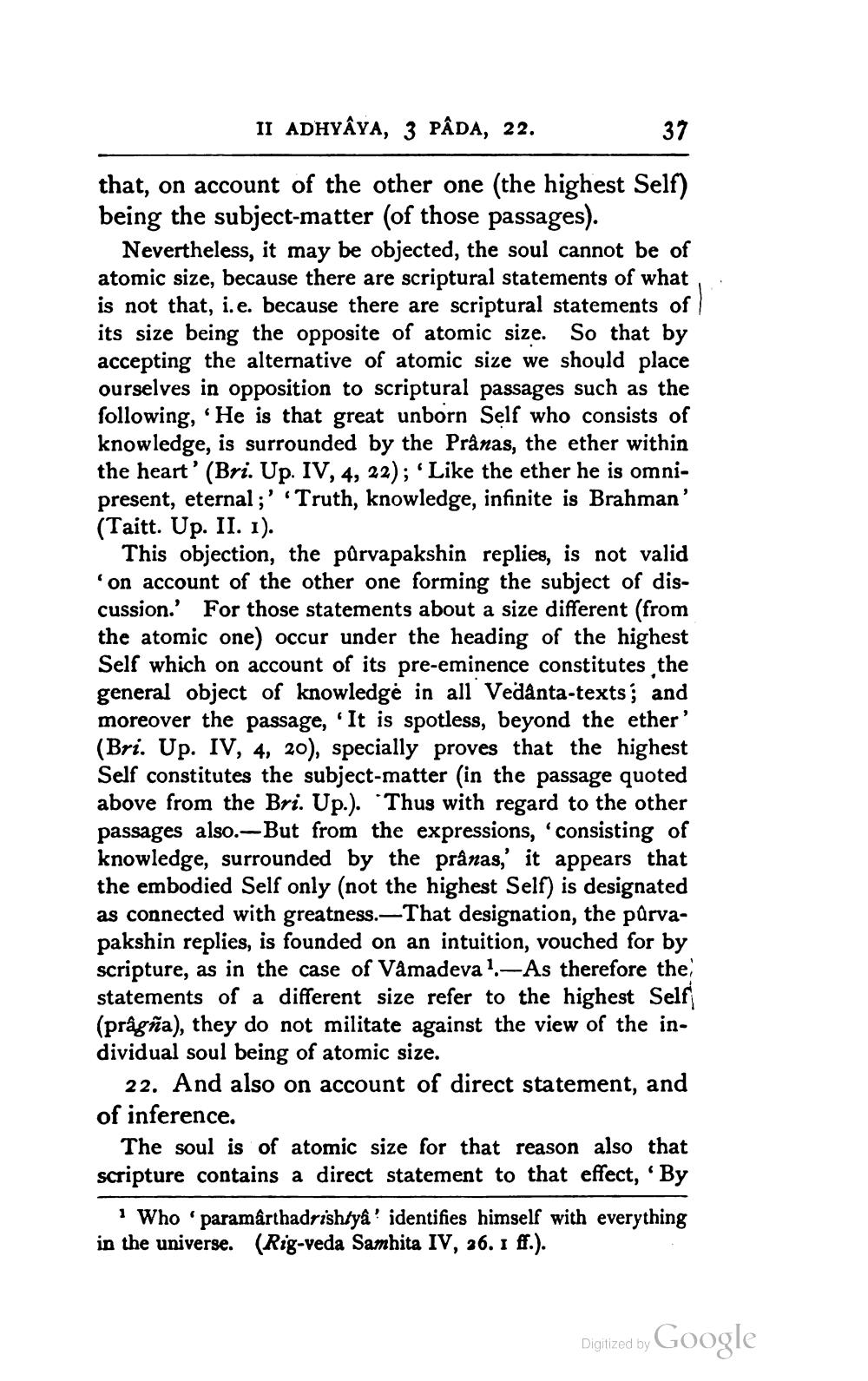________________
II ADHYAYA, 3 PÂDA, 22.
that, on account of the other one (the highest Self) being the subject matter (of those passages).
Nevertheless, it may be objected, the soul cannot be of atomic size, because there are scriptural statements of what is not that, i.e. because there are scriptural statements of its size being the opposite of atomic size. So that by accepting the alternative of atomic size we should place ourselves in opposition to scriptural passages such as the following, 'He is that great unborn Self who consists of knowledge, is surrounded by the Pranas, the ether within the heart' (Bri. Up. IV, 4, 22); ‘Like the ether he is omnipresent, eternal;' Truth, knowledge, infinite is Brahman' (Taitt. Up. II. 1).
This objection, the purvapakshin replies, is not valid 'on account of the other one forming the subject of discussion. For those statements about a size different (from the atomic one) occur under the heading of the highest Self which on account of its pre-eminence constitutes the general object of knowledge in all Vedanta-texts, and moreover the passage, 'It is spotless, beyond the ether' (Bri. Up. IV, 4, 20), specially proves that the highest Self constitutes the subject-matter (in the passage quoted above from the Bri. Up.). "Thus with regard to the other passages also.—But from the expressions, consisting of knowledge, surrounded by the prânas,' it appears that the embodied Self only (not the highest Self) is designated as connected with greatness. That designation, the pūrvapakshin replies, is founded on an intuition, vouched for by scripture, as in the case of Vamadeva!.-As therefore the statements of a different size refer to the highest Self (prågña), they do not militate against the view of the individual soul being of atomic size.
22. And also on account of direct statement, and of inference.
The soul is of atomic size for that reason also that scripture contains a direct statement to that effect, ' By
Who 'paramârthadrishtyâ' identifies himself with everything in the universe. (Rig-veda Samhita IV, 26. i ff.).
Digitized by
Digilzed by Google




